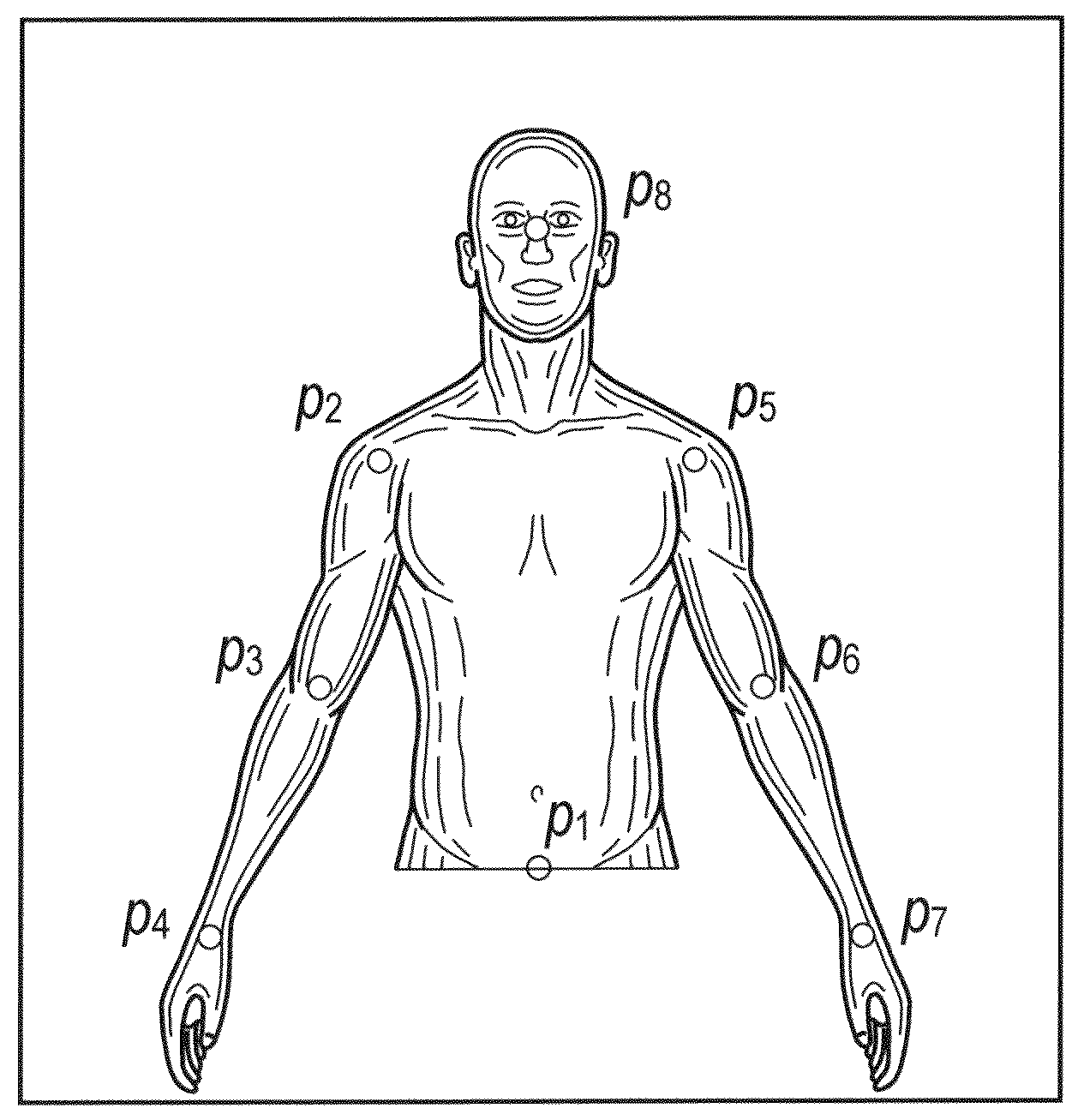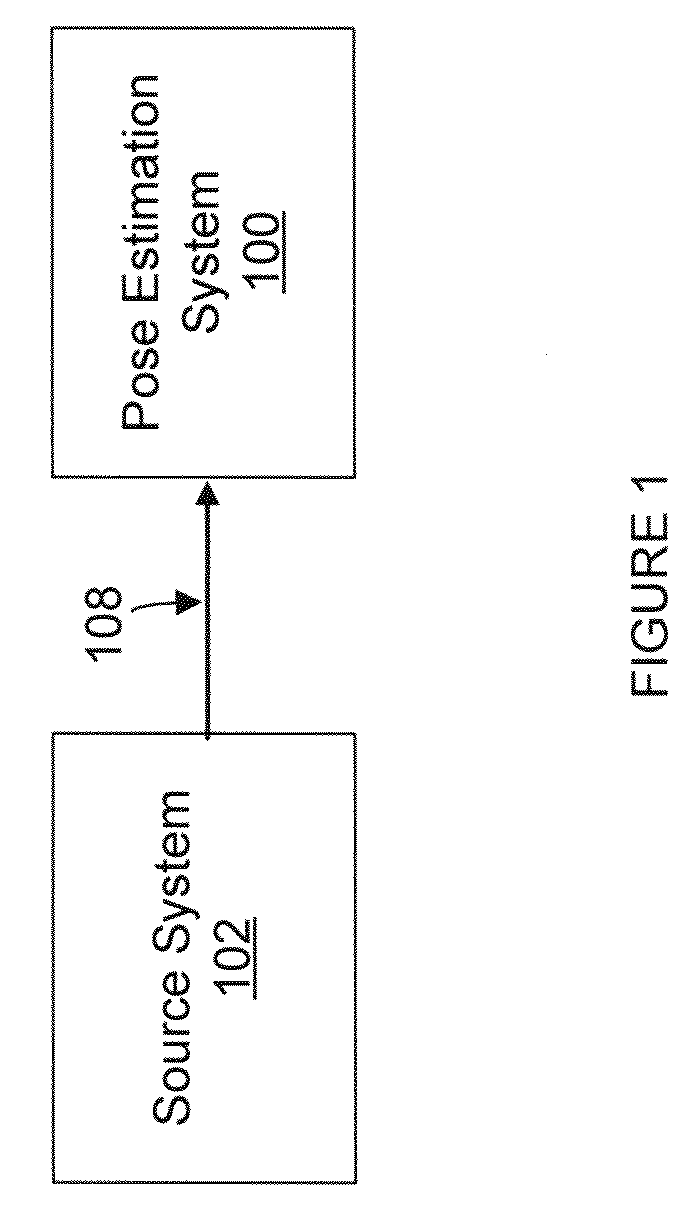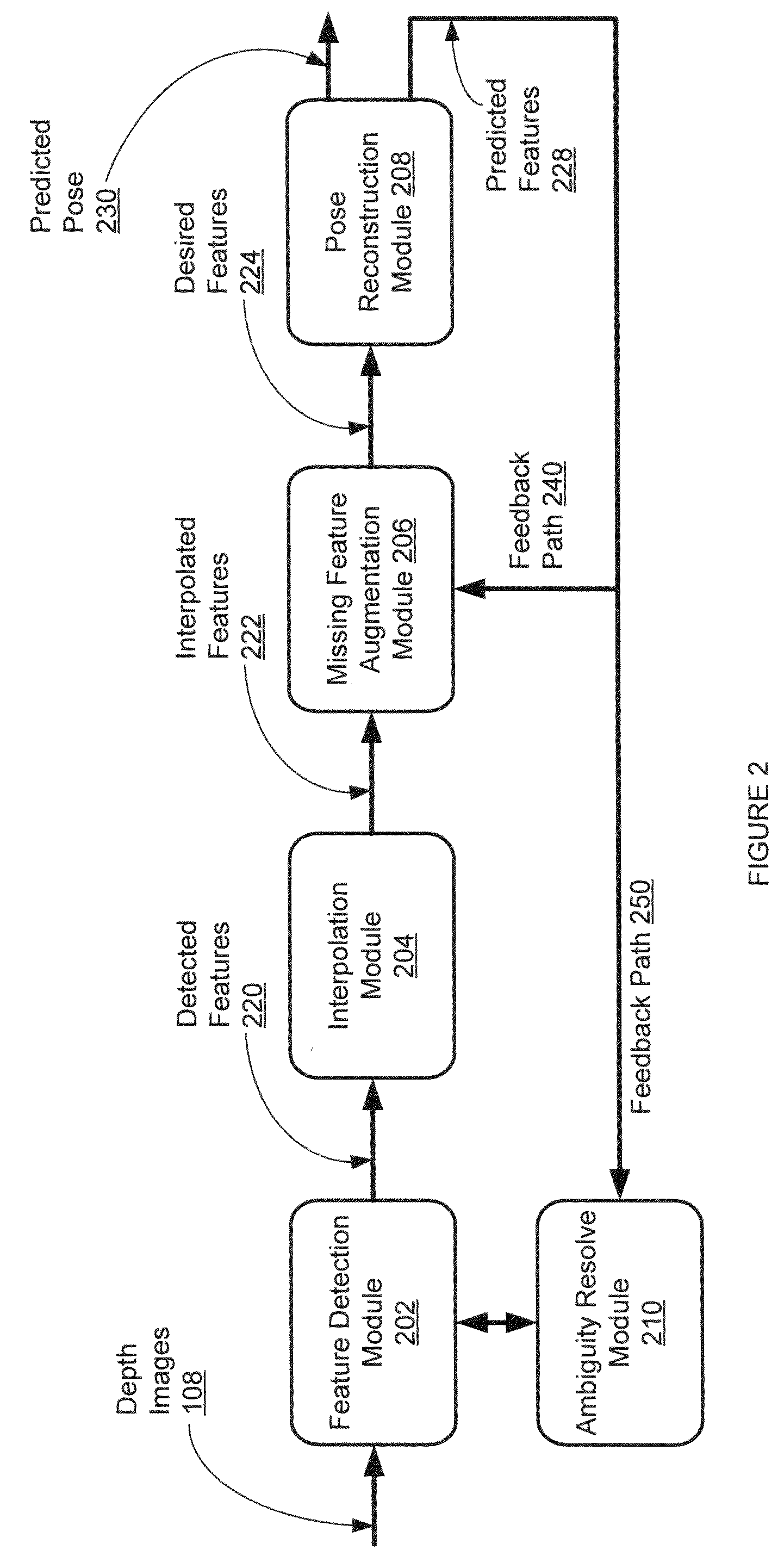Controlled human pose estimation from depth image streams
a technology of depth image and human pose, applied in the field of tracking motion of a system, can solve the problems of large number of degrees of freedom recovery, difficult problem, compounding difficulty,
- Summary
- Abstract
- Description
- Claims
- Application Information
AI Technical Summary
Problems solved by technology
Method used
Image
Examples
examples
[0078]One embodiment of the disclosed human pose estimation system is tested using a single a time-of-flight range image sensor (Swiss Ranger SR-3000 3D time of flight camera). The human performer was asked to perform a Taiji dance motion. FIG. 7E show snapshots of depth images acquired from the range sensor, the desired features (all eight upper body features), as well as the 3D reconstructed pose. The detected elbow positions are assigned a lower tracking priority as compared to the other six features. The detected features are shown by the colored circles overlaid on the depth image while the predicted features are shown by the colored spheres in the 3D reconstructed pose. Note that in some frames, some features may be undetected by the feature detection algorithm. The feature detection algorithm relies on feedback from the pose estimation module to resolve ambiguities in the detection as well as estimate those features which are missing or intermittently occluded.
[0079]The test ...
PUM
 Login to View More
Login to View More Abstract
Description
Claims
Application Information
 Login to View More
Login to View More - R&D
- Intellectual Property
- Life Sciences
- Materials
- Tech Scout
- Unparalleled Data Quality
- Higher Quality Content
- 60% Fewer Hallucinations
Browse by: Latest US Patents, China's latest patents, Technical Efficacy Thesaurus, Application Domain, Technology Topic, Popular Technical Reports.
© 2025 PatSnap. All rights reserved.Legal|Privacy policy|Modern Slavery Act Transparency Statement|Sitemap|About US| Contact US: help@patsnap.com



